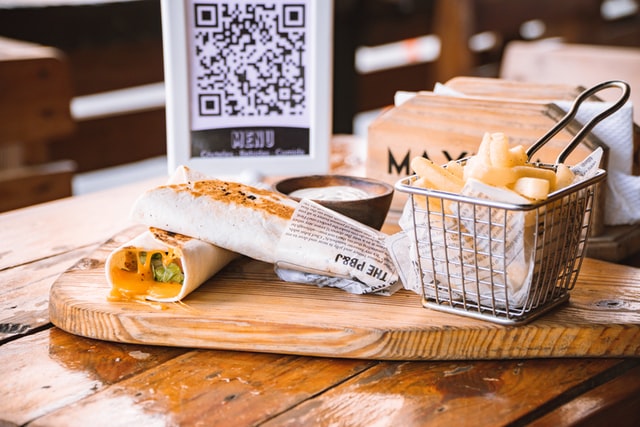The word “phygital” is the result of combining the English words “physical” and “digital”. Phygital is not only a verbal combination but has practical applications in the physical and digital world.
Phygital offers a unique customer experience. Essentially, it eliminates the boundaries between the physical and digital world. It does that by using new technologies such as the augmented reality (AR) , virtual reality ( VR), or artificial intelligence (AI).
In this article we will see how the phygital experience emerged as the new shopping experience. Further, we will see examples of phygital experiences and their benefits to the consumer and the business world.
The need for phygital experiences
It is true that we have been living in a phygital world for several years now. Especially after the pandemic in 2020, the phygital experience gained new traction that seems unlikely to stop. As a result, the way we, as consumers, buy and consume goods has fundamentally changed.
Particularly, during the pandemic, people ought to learn out of need how to make online purchases. But it was not only the consumers who were “forced” to resort to online shopping. Businesses themselves had had to build their own e-shop. They were “obliged” to proceed with the digital transformation of their businesses to be able to cope with the new market conditions.
Afterall, a characteristic of this period is the significant number of subsidies, given by the state, to retail stores to create their own e-shop. This was necessary since with the imposed lockdowns and social distancing, their customers could not come to their shop to buy their products.
Of course, despite the recent digitization frenzy in all industries, goods are still largely bought physically. That is we talk about a phygital experience, which is a mix of the physical and digital world, and not an entirely digital one.
Online VS in-person purchases
There are many advantages to buying online, first and foremost being convenience. But buying products in person offers consumers a special experience that can’t be replaced (at least not yet) by technology.
In addition, there are certain product categories that buying in-person is advised. Such goods are clothing and footwear. Consumers prefer to buy these types of goods in-person because they can make sure their fit is perfect.
Digital technologies have become an integral part of our shopping
Before the spread that the internet enjoys today, consumers had limited sources to gain information from. This information could be about the launch of new products, product features, or price comparisons.
Due to the lack of proper information consumers used to shop blindly. With limited information, consumers used to buy products influenced by salespeople or based on that they liked in appearance without knowing more about them.
The internet and digital technologies have empowered consumers more than ever. Now, consumers are do market research before deciding to buy a product. Apart from the different features, an online market research shows the stores that sell this product and their prices. As soon as they are done with their market research, potential buyers can go and see these products in-person and decide whether they want to proceed with their purchase.
Of course, there are also those who prefer to buy something differently. For example, there are buyers who prefer to go to the nearest store to closely examine the entire range of products. Then, by taking notes of the product codes, then they proceed to buy them online. The main reason for this is that with online purchases someone can find the lowest market price.
For many consumers, these are the most common ways of buying goods. But, as we said above, this was not always the case. The above examples of purchasing goods are classic examples of how the phygital experience has become a habit.
Phygital experience examples
The above was just a small example of how new technologies affect and constantly change our everyday life. If, even now, a fully phygital shopping experience sounds more like science fiction than reality to you, check out the following real examples:
Digital ordering in restaurants
The phygital experience has entered the fast-food industry. Whereas a person used to take orders, now this can be done by large LED touch screens having with the menu and allowing digital orders. Thus, customers can order digitally from these terminals and pay on the spot instead to the cashier.
Such a phygital experience can increase customer satisfaction and employee productivity. Customers avoid waiting and crowding to order, and employees can work in a quieter environment, minimizing the chances of making an error.
3D product visualization
3D product visualization creates a unique phygital shopping experience for customers and gives stores a competitive advantage. 3D imaging is simple, and there are several ways it can be used in a store.
3D imaging is useful in stores that have high – volume products and a wide range of products that require a lot of space. With the use of augmented reality (AR), the customer can, through special devices, see the hologram of products in their true dimensions. This way businesses do not have to worry about the lack of space within their stores.
In addition, this phygital experience can also be found in fitting rooms of some of the major fashion houses through smart mirrors. Customers can use these mirrors’ touchscreens to select clothes, shoes and accessories to see how they would look on them. Smart mirrors may seem like a not-so-necessary technology but it can save a lot of time during shopping.
The use of QR Codes

The QR Codes is short for Quick Response Codes. QR Codes are very similar to barcodes. What characterizes them is the large storage capacity and reading speed. QR Codes can be found in magazines, restaurant and bar menus, product labels, business cards, museums and much more.
QR Codes offer a phygital experience since reading them requires the use of devices equipped with a digital camera such a smartphone or tablet. Due to the high amount of information that can be stored in a QR Code, they are very useful for both professionals and consumers.
QR Codes are now widely used in fast food outlets. Customers can find QR Codes for the menu on the tables. Scanning them they can access the menu, without waiting for the waiter, and order online. These QR code help businesses improve their customer service at almost zero cost.
Personalized content and ads through data analysis

Marketing bombards us daily with many ads, but not all are relevant to us. Phygital retail offers an increasingly digital experience, and analytics is essential for more targeted and effective marketing.
Examples of data analytics is the use of push notifications and personalized advertisements. Marketeers can send them to a certain number of customers with the same interests, or to people within a geographic area. Data analysis allows businesses know their customer’s preferences. Doing so, they can send targeted content to their customers which is more likely to increase sales.
In addition, machine learning allows corporate websites to personalize their content to each user. Taking again the example of a clothing and footwear store, after logging in to a store’s e-shop with account, customers will receive product suggestions that fit their style. These data come from previous purchases from the type of products someone often looks at a website.
Conclusion
The phygital experience combines the digital and the physical world with many applications and benefits to businesses and customers. For this reason, there is an systematic integration of such technologies allowing the phygital experience become a reality.
The development of these technologies and their applications were not created in a vacuum. On the contrary, they are the result of technological evolution and the ever-changing needs of consumers. Businesses need to differentiate and gain a competitive advantage in a global and highly competitive world. It is certain, however, that the future will be phygital since it offers a unique experience and benefits.

